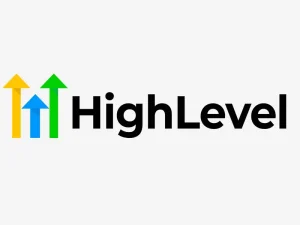Unlocking Social Media Success: Your Essential Guide to KPIs
In today’s digital landscape, social media isn’t just a platform for sharing cute cat videos or the latest meme; it’s a powerful tool that can drive brand awareness, customer engagement, and revenue growth. But how do you measure your success in this ever-evolving space? Enter Key Performance Indicators (KPIs) – the secret sauce that helps businesses like yours quantify their social media efforts and strategize for continual improvement. Whether you’re a seasoned marketer or just starting out on your social media journey, understanding KPIs is essential for navigating the complexities of online engagement. In this comprehensive guide, we’ll demystify what KPIs are, why they matter, and how to effectively leverage them to transform your social media presence from ordinary to extraordinary. Get ready to unlock the full potential of your digital strategy!
Introduction to Key Performance Indicators (KPIs) for Social Media
In today’s digital landscape, social media isn’t just a platform for sharing cute cat videos or vacation photos. It’s a powerful tool that can make or break your brand’s success. But how do you navigate this complex world? Enter Key Performance Indicators (KPIs). These metrics are the compass guiding your social media strategy, helping you to gauge what works and what doesn’t.
Understanding KPIs allows you to go beyond gut feelings and assumptions. They provide concrete data that can influence decision-making, optimize campaigns, and ultimately drive results. Whether you’re looking to increase brand awareness or boost sales, knowing which KPIs matter most is crucial for achieving your goals in the bustling sphere of social media marketing. Ready to decode the numbers behind your online presence? Let’s dive in!
Why are KPIs important in social media strategy?
Key Performance Indicators (KPIs) serve as the backbone of any effective social media strategy. They provide clear metrics that help businesses measure their success and identify areas for improvement.
Without KPIs, you’re essentially navigating without a map. You may be active on various platforms, but how do you know what’s working? KPIs allow marketers to track performance over time and make data-driven decisions.
Understanding which content resonates with your audience is crucial. Metrics like engagement rates highlight what captivates followers and fosters community interaction.
Moreover, KPIs align social media efforts with broader business goals. By tracking conversions or brand mentions, companies can determine if their online presence translates into real-world benefits.
Ultimately, KPIs bring focus and clarity to your social media initiatives, ensuring every post serves a purpose rather than being just another update in the feed.
Types of KPIs for Social Media
Understanding the types of KPIs for social media can significantly enhance your strategy.
Reach and impressions measure how many people see your content. Reach indicates unique users, while impressions count total views, including multiple from one user.
Engagement and interactions track how audiences respond to your posts. Likes, shares, comments, and saves reflect genuine interest and connection with your brand.
Conversions and click-through rates show the effectiveness of calls to action. They reveal how well you drive traffic to your website or product pages.
Brand mentions help gauge overall sentiment about your brand online. Monitoring these can highlight customer perceptions—positive or negative.
Follower growth reveals audience expansion over time while demographics provide insights into who is engaging with you. This data helps tailor content for specific groups effectively.
– Reach and Impressions
Reach and impressions are two fundamental metrics that help gauge the visibility of your social media content.
Reach refers to the total number of unique users who see your post. It provides insight into how far your message travels across the digital landscape. Understanding reach allows brands to evaluate their audience’s size and pinpoint which strategies are effective in attracting new viewers.
Impressions, on the other hand, measure how many times a piece of content is displayed. This includes multiple views by the same user. Impressions can indicate whether your posts resonate enough for repeated engagement.
Together, these metrics form a clear picture of brand exposure on social platforms. They guide decisions about content type and posting frequency, making it easier to optimize future campaigns for better outreach and visibility.
– Engagement and Interactions
Engagement and interactions are vital metrics that indicate how well your audience connects with your content. High engagement means people are not just seeing posts but actively responding to them.
Likes, comments, shares, and retweets all count as indicators of user interaction. Each of these actions reflects a level of interest or emotional connection with what you’ve shared.
Monitoring engagement allows brands to understand their followers better. It gives insights into which types of content resonate most—whether it’s informative articles, entertaining videos, or eye-catching visuals.
Conversing with your audience can also enhance loyalty. When users feel heard through responses and engaging dialogue, they are more likely to become advocates for your brand.
Encouraging interactions is key too; asking questions or running polls can spark conversations and foster community feeling around your social media presence.
– Conversions and Click-through Rates
Conversions and click-through rates (CTR) are vital metrics in the social media landscape. They indicate how effectively your content drives users towards taking desired actions, whether that’s making a purchase or signing up for a newsletter.
A high CTR reveals that your audience finds your posts compelling enough to engage further. It indicates that your messaging resonates well with them.
Conversely, low conversion rates may signal a disconnect between what you’re offering and what users expect. This mismatch can stem from unclear calls-to-action or content that doesn’t align with user intent.
Tracking these KPIs allows you to refine strategies over time. Adjusting visuals, copy, or even targeting can lead to improved results. Always remember: it’s not just about clicks; it’s about turning those interactions into meaningful actions that advance your business goals.
– Brand Mentions and Sentiment Analysis
Brand mentions and sentiment analysis are crucial for understanding how your audience perceives your brand. Every mention on social media, whether positive or negative, gives insight into customer feelings and attitudes.
Tracking brand mentions allows you to gauge awareness and engagement levels. You can see who is talking about you and what they are saying. This information helps build a clearer picture of your brand’s reputation.
Sentiment analysis takes this a step further by evaluating the emotional tone behind those mentions. Are customers excited about your latest product launch? Or are they frustrated with service delays?
By analyzing sentiment, you can respond more effectively to feedback—positive or negative. This proactive approach not only enhances customer relationships but also informs future marketing strategies based on real-time data from your audience’s voices.
– Follower Growth and Audience Demographics
Follower growth is more than just a number. It reflects the expanding interest in your brand and the effectiveness of your content strategy. Tracking this metric helps you understand if you’re reaching new audiences or engaging existing ones.
Audience demographics provide deeper insights into who’s following you. Factors like age, gender, location, and interests are crucial for tailoring your messaging. Knowing these details allows brands to create targeted campaigns that resonate with specific groups.
For example, a youthful audience might prefer playful content on platforms like TikTok, while a professional demographic could engage better with LinkedIn articles. This understanding shapes not only content but also advertising strategies.
By monitoring follower growth alongside demographics, brands can adapt quickly and stay relevant in an ever-changing social landscape. Understanding both elements creates opportunities for meaningful connections that translate to loyalty and conversions.
How to Choose the Right KPIs for Your Goals?
Choosing the right KPIs starts with understanding your goals. Are you looking to increase brand awareness, drive traffic, or boost sales? Each goal requires a different focus.
Next, consider setting SMART goals—Specific, Measurable, Achievable, Relevant, and Time-bound. This framework sharpens your objectives and helps identify which KPIs will best measure success.
Aligning KPIs with broader business objectives is crucial. For instance, if customer retention is a priority for your company this quarter, engagement metrics like shares and comments may take precedence over sheer reach numbers.
Regularly revisit these KPIs as your strategy evolves. What worked last month might not apply today or tomorrow. Adaptation keeps you agile in an ever-changing digital landscape.
Engaging stakeholders during this process can also provide insights into what truly matters across departments. Collaboration fosters a more comprehensive approach to defining effective KPIs.
– Setting SMART goals
Setting SMART goals is a strategic approach that enhances clarity and focus in your social media efforts. The acronym stands for Specific, Measurable, Achievable, Relevant, and Time-bound.
Start by defining specific objectives. Vague goals lead to confusion. Instead of saying “increase engagement,” specify “boost Instagram likes by 20%.”
Next comes measurability. Ensure you can track progress with concrete metrics. This allows you to evaluate success periodically rather than waiting until the end of a campaign.
Achievability is crucial too. Set realistic targets based on current data and industry benchmarks; otherwise, frustration may derail your motivation.
Relevance ensures alignment with larger business objectives or brand values. Every goal should contribute meaningfully to your overall mission.
Lastly, time-bound goals create urgency and keep momentum alive. Assign deadlines to encourage timely execution while providing checkpoints for assessment along the way.
– Aligning KPIs with business objectives
Aligning KPIs with your business objectives is crucial for effective social media strategy. Each key performance indicator should serve a specific purpose that directly ties back to your overarching goals.
Start by clarifying what those business objectives are. Are you aiming for increased brand awareness or driving online sales? Your KPIs must reflect these priorities.
Once defined, choose metrics that can provide insights into progress toward these aims. For instance, if boosting brand awareness is the goal, focus on reach and impressions. If conversions matter more, prioritize click-through rates.
Regularly review how well your chosen KPIs align with changing business needs. Flexibility ensures that you’re measuring what truly matters as market conditions evolve.
By integrating this approach into your strategy, you’ll foster a clearer understanding of success and areas needing improvement. A tailored set of KPIs empowers teams to work cohesively toward shared outcomes.
Tools to Measure Social Media KPIs
Measuring social media KPIs effectively requires the right tools. Numerous options are available, each offering unique features to help track performance.
Google Analytics is a robust choice for monitoring website traffic from social platforms. It provides insights into user behavior and conversion rates, helping you understand how social media drives engagement.
For deeper analysis of specific platforms, consider Hootsuite or Sprout Social. These tools offer comprehensive metrics on reach, impressions, and audience interactions across multiple channels in one dashboard.
If you’re focused on sentiment analysis and brand mentions, Mention or Brandwatch can be invaluable. They provide real-time data on your brand’s online presence and customer perception.
Finally, don’t overlook native analytics provided by platforms like Facebook Insights or Twitter Analytics. They give detailed reports tailored to your content’s performance directly within the app.
Case Studies: Successful Brands Using KPIs for Social Media Success
Nike is a prime example of leveraging KPIs effectively. The brand utilizes engagement metrics to tailor its content, focusing on what resonates with its audience. By analyzing likes and shares, they craft campaigns that spark conversations and drive loyalty.
Coca-Cola has also embraced KPI-driven strategies. They monitor sentiment analysis closely during major campaigns. This allows them to adjust messaging in real-time, ensuring positive connections with consumers across various platforms.
Starbucks takes follower growth seriously by measuring audience demographics meticulously. Their insights guide localized promotions that appeal directly to community tastes.
These brands show how KPIs can transform social media efforts into powerful business tools. Each case highlights the importance of data in refining strategies for more impactful results without losing sight of consumer needs.
Tips for Tracking and Analyzing KPIs
Tracking and analyzing KPIs requires a strategic approach. Start by establishing a routine for data collection. Weekly or monthly assessments can provide consistent insights.
Utilize social media analytics tools to streamline this process. Platforms like Hootsuite or Sprout Social offer comprehensive reports that simplify your tracking efforts.
Visualizing your data can reveal trends more clearly. Create graphs and charts to make sense of the numbers, helping you spot patterns in engagement or growth easily.
Don’t forget qualitative analysis. Monitoring comments and messages gives context to the figures, revealing audience sentiment behind the metrics.
Involve your team in discussions about KPI outcomes. Diverse perspectives often lead to innovative strategies based on shared observations.
Lastly, be adaptable with your tracking methods. As platforms evolve, so should your KPIs—what worked last quarter may need adjustment now.
Common
Tracking performance is crucial in the ever-evolving landscape of social media. Understanding common pitfalls can help you avoid them and steer your strategy toward success.
One frequent mistake is focusing too much on vanity metrics, like follower counts, without considering their actual impact on business goals. Remember, a large audience does not automatically translate to engagement or conversions.
Another issue arises from neglecting to adjust KPIs based on changing objectives or market trends. Your business environment shifts; your KPIs should reflect that shift as well.
Furthermore, many brands overlook the importance of qualitative data alongside quantitative measures. Metrics such as customer sentiment can provide invaluable insights into how audiences perceive your brand.
Finally, failing to regularly assess and tweak your strategies leaves growth untapped. Regularly revisit your KPI framework and analyze what works best for you.
Staying informed about these common challenges will empower you to navigate the complex world of social media more effectively and with greater confidence in achieving real results.






